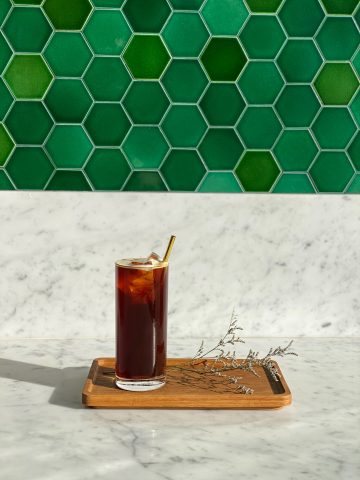Making Iced Coffee At Home
By Nate Lumpkin, Crown Barista
The good news is that cold coffee is extremely easy to make, even if you have limited tools and equipment. Here are a couple methods you can use to make cheap, delicious, and easy cold coffee at home.

FRENCH PRESS
Of all the kinds of coffee, this is probably the easiest. There is little room for error, and little or no technique involved. All you need is coffee, cold water, a French Press, and plenty of time. If you’re in a hurry this won’t help you, but if you plan ahead, this will be the fastest (and most caffeinated) coffee you could make.
RECIPE
78g coffee
600g cold water
A french press
Add the ground coffee to the French Press. Add the cold water to the French Press. Stir gently several times, so that all the grounds are evenly saturated. Break up any clumps. Cover the press and refrigerate. Wait 12 to 16 hours. Press, and serve cold.
As always, it’s best if you use coffee that’s ground just before brewing, and it’s best to use filtered water. If neither of these are available, pre-ground coffee and tap water will work fine. You’re probably going to want to use coffee ground a little coarser than you would for pour-over, and if you don’t have that option, consider using a little less coffee. Coffee ground that fine might extract really aggressively and make a cup that’s too strong, so using a smaller dose will help cut the strength.
If you don’t want to use the exact recipe posted here, just try to shoot for a large coffee to water ratio. One to five, six, or seven. I used a one to seven ratio because I don’t like a really strong cold brew in the morning. I prefer a coffee that’s light and refreshing and can be drunk cold without ice. However, if you want something strong that goes well with ice and milk, just increase the dose.
If you don’t have a French Press, my coworker Elise Becker suggested that one could make a toddy bag out of a Chemex filter to hold the grounds. All you would need to do is add the grounds to a Chemex filter and tie it off with string to make a sealed bag. You want to leave plenty of room in the bag for the grounds to expand when they get wet, but that’s it. You can steep the coffee in any container with this method: mason jars, really really big mugs, and stovetop pots all come to mind. Just remove the bag when you’re done steeping, being careful not to let it rip or tear, and then serve the coffee as normal.

FLASH BREW
While this coffee takes a few more steps, I find it makes a really refreshing and thirst-quenching iced coffee, with fuller aromatics and more delicate flavors than most cold brews, especially if you’re using high quality coffee. Fruity and bright coffees will especially shine with this method.
Brew this coffee as you would a normal pour-over, but with more coffee and less water, and directly onto a generous portion of ice. You want more ice than the hot coffee can melt, basically. The idea is that the heat from the water is unable to melt all the ice in a short amount of time, so you don’t have to worry about providing a “correct” portion of ice—the coffee reaches its own proper proportions as soon at the ice stops melting, which should basically be as soon as the brew is complete.
A one-to-ten ratio is a good place to start with this, and then depending on the result and your preferences, dial the dose up or down.
RECIPE
25g coffee
250g water
A pour over device
A generous amount of ice
Add the ice to your carafe. Brew your pour-over directly over the ice. I use a bloom of 30 to 40 seconds, and two pulse pours, one to 150, then to 250. Gently agitate, strain, and then serve over more ice, if you’d like.


